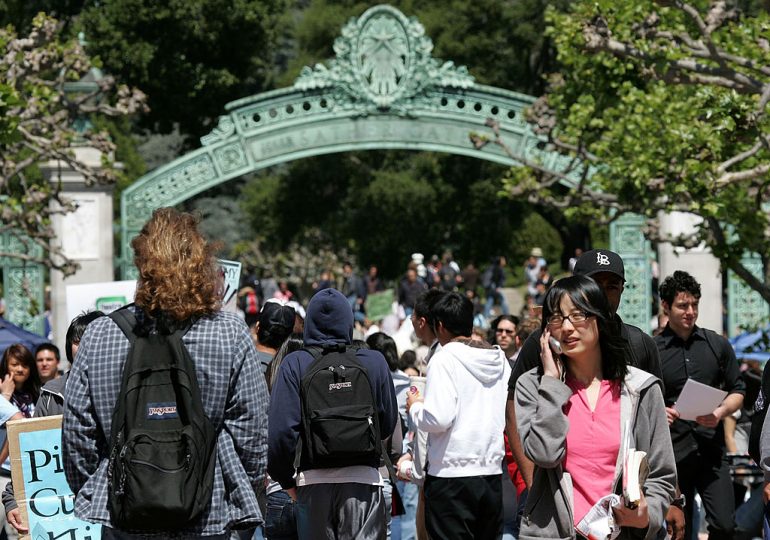April was meant to be the finish line for Amanda Hoffman’s daughter, Layla. A senior in high school, Layla, 18, was looking forward to celebrating and deciding where to spend the next four years. But amidst this year’s ongoing delays of the Department of Education’s Free Application for Federal Financial Aid (FAFSA) application process, she’s left in limbo.
[time-brightcove not-tgx=”true”]
“She’s ready to be done with [school] and ready to celebrate,” says Hoffman. “But until she has answers, it’s hard to be like, ‘hurrah’.”
A botched rollout of a new application process for FAFSA has caused chaos for millions of current and potential college students. As many high school seniors wait for financial aid packages, some are left deciding where to attend without a clear idea of how much they might be expected to pay.
The Department of Education aimed to launch a simplified financial aid application process this year, but issues with the rollout mean the process is lagging far behind the usual benchmarks. High school seniors usually receive their college acceptance letters and financial aid packages by mid-April—but that’s not the case for many students this year.
“It’s just this perfect storm of technical issues and procedural delays that have just rolled downhill right from the Department of Education to institutions to students and families,” says Taylor Odle, an assistant professor of educational policy studies at the University of Wisconsin-Madison.
“It’s April and some people still haven’t even filled out the FAFSA,” Odle adds. “We are very, very late in the game.”
The FAFSA application was opened on December 30, three months later than usual, and was filled with technical glitches that prevented many from submitting their applications. So far, only about 27% of the class of 2024 has completed a FAFSA— compared to 45.5% of the class of 2023— according to data compiled by the National College Attainment Network. And families that managed to get them in are still not in the clear—roughly 30% of FAFSA forms are potentially affected by processing or data errors, the Department of Education said on Tuesday.
A Department of Education spokesperson said that the department is putting “all hands on deck” to get students’ financial information to schools. “The Department’s top priority remains getting schools and students the information they need to package and receive aid offers, and make important enrollment decisions as quickly as possible,” the spokesperson told TIME in an emailed statement.
The department says that it has returned to normal processing times, and that more than 7.2 million applications have been processed. “We believe we’ve identified and fixed the errors affecting the accurate processing of large numbers of FAFSA forms, and schools can move forward now with packaging aid for the vast majority of student records that they have received.”
Colleges are now left with a tight window to provide aid packages. Many colleges use data from FAFSA to determine a family’s expected contribution or merit aid, but colleges did not receive that information until mid-March, leading to delays in sending packages to students.
“Many students and families are probably going to be in a position where they have to make a decision about whether to go to college or where to go to college with really late, incomplete information this year,” says Odle.
Hoffman’s daughter is hoping to attend Ohio University, and while she knows she’ll receive an $6,000 scholarship based on her SAT scores, the rest of her funding is still up in the air.
“She’s supposed to decide by the end of this month and pay her housing deposit, but we can’t commit to anything until we know what the financials look like,” says Hoffman, who notes that their family is considering taking out Parent Plus loans or having Layla attend community college if an aid package doesn’t materialize before the commitment deadline in late April.
Some schools, including the University of California, have extended their deadline to commit—though the decision to do so is up to individual universities. Many worry that at schools with housing scarcities, students waiting on financial aid might be at a disadvantage if they submit their housing deposits after those who are able to immediately commit.
Adrian Rios, a southern-California based senior, says that though he had no issues submitting his FAFSA application, but he’s yet to receive an aid package from any of the schools he was admitted to, and worries he’ll be left with little time to weigh his options. “The timing and not receiving these packages is making me have to pick somewhere closer just in case I have to commute.”
Fleli Hakizimana, a senior from the Milwaukee area, says that issues with the FAFSA application process made him stick to in-state schools, where he knew he’d qualify for state grants. “I wanted to leave my state and experience things I haven’t done before, but when I found out that FAFSA wasn’t even coming out until January it became important for me to stay in state, which was something that I wasn’t really thinking about.”
He says that the delays have impacted his ability to apply for other funding opportunities as well. Applications for local scholarships required him to include his Student Aid Index (SAI), a new eligibility number that helps schools determine how much aid a student might be entitled to, which wasn’t available until a few weeks ago. “I know that there were a lot of scholarships I missed out on,” he adds.
Odle says that many low-income students might not be aware that their cost of attending stands to be a lot lower through FAFSA than the sticker cost schools advertise.
“Most families are paying something much smaller, but they need to know what sources of aid are available so they can get to that much smaller amount,” he says.
The DOE said they are “working on this around the clock” to get students the information they need. Hakizimana says it’s been frustrating to watch others commit to colleges while procedural errors leave him uncertain about his own future. “I feel like everybody else around me, is already set on where they’re going and what they’re studying. But for me, and a lot of people who come from lower-income families, we don’t really know until that package comes.”
Leave a comment








